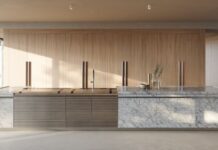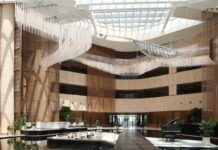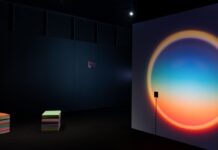In this week’s guest post renovation-loving interior decorator Catleya Ara James takes a look at the five most common lighting mistakes (and how to fix them).
Customer satisfaction is an integral part in maintaining the success of a building and design company, and since lighting plays a significant role in setting the tone of a particular space, you should be extra careful not to make these five common lighting mistakes that most interior designers seem to fall prey to.
 Neglecting Natural Light
Neglecting Natural Light
One of the most important rules in interior design is to always take advantage of a room’s natural light. Unfortunately, this rule seems to be commonly ignored. But what you should understand is that no matter how good furniture may look at a particular spot or how nice those drawn curtains are to the eyes, if they obstruct natural lighting, you have to move them or draw them back.
Natural light is said to be important when it comes to worker productivity and the overall health of an individual. But regardless if this is true or not, there is no denying that making use of natural light can help your clients reduce energy consumption.
Using The Same Lighting In Every Room
You as a builder or an interior designer should know above all else that people’s activities tend to vary depending on the type of room they’re in. This variation extends to the rooms’ lighting as well.
Warm lights can make a room cosier which is why they are perfect for bedrooms and living rooms, or in other areas where people gather. Cool lights are better suited for places like bathrooms. The rule of variation is also true in business environments as different lighting can help set the mood for offices, lobbies, and conference rooms.
When your clients wish to have the same lighting in every room, it is up to you to educate them regarding this matter.
 Excessive Use of Recessed Lighting
Excessive Use of Recessed Lighting
CostFreak’s on recessed lighting reveals it is becoming more affordable and effective than the traditional lighting systems of previous years. And since recessed lighting is becoming more affordable and effective, its popularity seems to be increasing as well which is why there are now more people that abuse the use of it.
Recessed lighting is best suited for areas with a low ceiling such as kitchen islands and counters, bathrooms, and in-home movie theaters because it brightens only small areas. Using it in high ceiling rooms can be quite problematic since your clients would have to use a great number of them to illuminate the space.
Neglecting Dimmers
Never underestimate the power of dimmers. When you opt to neglect them, you are also denying your clients the ability to make their rooms more flexible. Just think about it, when you make use of dimmers for your clients’ interior light design, they would be able to turn a brightly lit room into something warmer and more accommodating.
 Lack of Layering
Lack of Layering
One problem that most interior designers face when it comes to lighting is the presence of high contrast shadows. A great way to fight this is through effective light layering. When there is a proper layering of light, you would be able to add depth and sophistication to your clients’ rooms.
Layering would require different types of lighting, namely; ambient, accent, and task.
Ambient lighting is used for walking and getting around. It is mainly for proper vision. While accent lighting is used to bring out the beauty in a particular element in a room. Task lighting is used for particular tasks such as reading or doing make-up.
Images courtesy Pixabay.





























